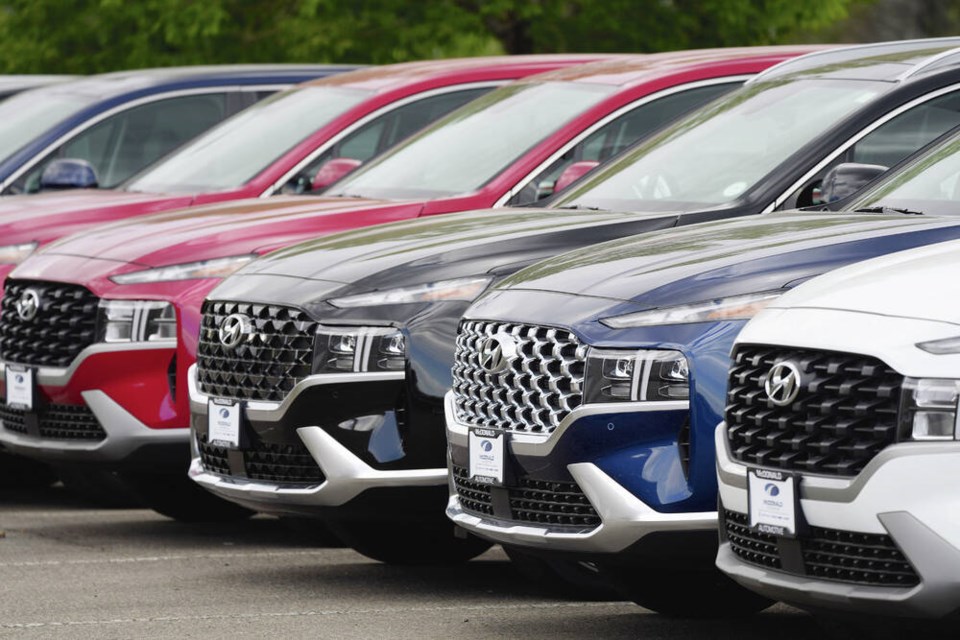Courtesy of the Times Colonist
Photo: Globally, SUVs are now 51 per cent of the new car market, having largely squeezed out small and medium size cars. DAVID ZALUBOWSKI, AP FILES
Over the past few weeks, I have dug into the details of Saanich’s “four planets” ecological footprint, as calculated by CHRM Consulting, while recognizing this is an underestimate, in that it does not account for our impact on biodiversity or the extent of our “toxics footprint.”
This week, I start to look at the key recommendations in the report for getting us to a “One Planet” Saanich — which, of course, is also applicable to the whole region.
Given that our carbon emissions are a large part of our overall footprint, it makes sense that “an overarching priority for climate action is to minimize demand for energy and eliminate emissions from use of fossil fuels,” as the report states.
It has always seemed to me that an important but often overlooked opportunity in that regard is to minimize energy demand by increasing efficiency, which some have argued is, in effect, our greatest new source of energy.
The International Energy Agency calls energy efficiency the “first fuel” in the clean energy transition, providing “some of the quickest and most cost-effective CO2 mitigation options while lowering energy bills and strengthening energy security,” and “the single largest measure to avoid energy demand in the Net Zero Emissions by 2050 Scenario.”
However, the International Energy Agency adds, “the pace of global energy intensity improvements had noticeably slowed in the second half of the last decade and virtually stalled during the first two years of COVID-19.”
The good news is “efficiency progress has gained momentum, with annual energy intensity improvements expected to reach about 2% in 2022.”
A splendid — or actually, a terrible — example of inefficiency is the growth in sales of the large SUVs and light trucks we see everywhere, vastly over-designed for the suburban market and very energy inefficient.
A report last month from the Global Fuel Economy Initiative reported: “The growing market share and huge size of SUVs are undermining opportunities to mitigate the impact of vehicle improvements even with the growing shift to electric vehicles.”
Among other things they found globally, SUVs are now 51 per cent of the new car market, having largely squeezed out small and medium size cars, and that the average weight of a light-duty vehicle “has reached an all-time high, exceeding 1.5 tonnes,” meaning they require more materials, which increases their ecological footprint over and above their use of fossil fuels.
Overall, they reported, “energy demand and CO2 emissions could have fallen 30% more between 2010-2022 if vehicles had stayed the same size.”
The reason for this shift is pretty straightforward — SUVs are more profitable for the auto industry.
The Global Fuel Economy Initiative report notes they are “sold at a premium for proportionally lower manufacturing costs, which leads most of [the manufacturers] to resist and slow the transition to EVs.”
But it clearly is not in the public interest to sell more and more, and larger and larger vehicles. It is way past time the government stepped in and mandated smaller vehicles — you don’t need a huge SUV or truck for commuting around the region.
In addition, it is time government stopped the crazy marketing of cars based on speed and/or the rugged great outdoors.
The recent ban on a Toyota ad by the Advertising Standards Authority in the U.K. on the grounds that the ads “condoned the use of vehicles in a manner that disregarded their impact on nature and the environment [and] had not been prepared with a sense of responsibility to society” sets an important precedent that Canada should follow.
But in addition to smaller, more energy efficient cars — and the Global Fuel Economy Initiative also notes that “electric powertrains use three to six times less energy than internal combustion engine vehicles to travel the same distance” — the Saanich Ecofootprint report goes further, suggesting “we can have greater impact if we go beyond switching to electric vehicles and instead focus on reducing the demand for vehicle-based travel.”
That means stopping urban sprawl, densifying existing urban areas so they become more walkable, bikeable and livable, creating a better fit between where people live and where they work, using telecommuting where appropriate, and creating good public transit, instead of wasting millions more dollars on flyovers for cars.
thancock@uvic.ca
Dr. Trevor Hancock is a retired professor and senior scholar at the University of Victoria’s School of Public Health and Social Policy.
